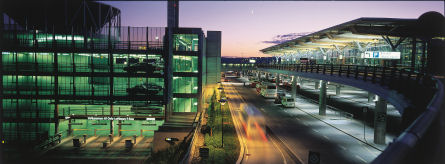Preliminary figures from Airports Council International show global passenger traffic held up well in 2006. The best performers not unexpectedly came from China and India, while many US airports stalled as domestic capacity stagnated
Once again it is airports from the emerging world economies that are growing the fastest (see Table 1). India's main hubs, Delhi and Mumbai, outpaced every other airport with over 20% rises in traffic in 2006. Chinese airports too continue to dominate the list of fast growers. No fewer than six made the top 15 last year, one more than 2005.
Few European airports have registered rapid double-digit growth in the past couple of years. In 2006, Dublin, Hamburg and Oslo (below) led a charge of five into the leading group.
Absent from this list is any airport from the USA. In 2005 it was Salt Lake City growing the strongest, by 21%. Last year it had a sharp reversal in fortunes, falling back with a 3.4% drop, causing it to appear in the laggards column (see Table 2). A pullback of mainline service from Delta Air Lines was the culprit. Not even a 20% traffic increase from Southwest, the third largest carrier after Delta and its regional partner Skywest at Salt Lake, could arrest the slide.
Another Delta hub has suffered similar falls. Cincinnati had the misfortune of topping the laggards listing with a dramatic 28% fall in traffic last year. Its fall is almost entirely down to Delta's decision in late 2005 to downsize its Cincinnati hub. It cut mainline and regional capacity by 26%.
In fact, 10 of the 15 slowest growing airports in the world were in the USA last year, reflecting a virtual stagnation of domestic capacity. As preliminary ACI traffic figures for 2006 show, overall North American airports grew by only 0.5%, easily the poorest performance of any world region.
At the global level traffic held up at 5% growth, down slightly from the 6.3% of 2005 (see Table 4). In 2004 the rise was nearly double this level at 10.9%. Asia-Pacific and Middle East airports sustained their strong results. Cargo bounced back with an 11.3% rise.
Traffic forecast
In its latest Global Traffic Forecast, ACI predicts that traffic will rise again in 2007, by 5.7%. And while the airport body then expects traffic to fall from 2008 until the end of the decade, it believes it will only be a marginal decline. By 2010 it sees traffic growing at 4.6%. Over the next 20 years it is forecasting an average 4% annual growth in traffic.
As Table 3 shows, two carriers stand out when it comes to hub domination. Continental Airlines has built up its operations to achieve over 70% of the frequencies at Houston George Bush and New York Newark airports. Meanwhile, Southwest controls Chicago Midway and is building its position at Oakland International. In Europe, Irish low-cost carrier Ryanair now accounts for nearly 60% of the services at London Stansted, which easily outperforms nearest rival easyJet. It offers 22% of the airport's frequencies.
|
|---|
Source: Airline Business
























